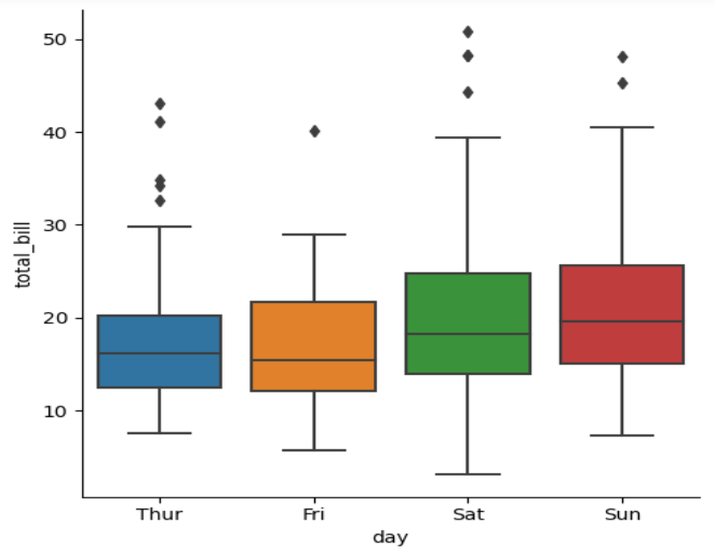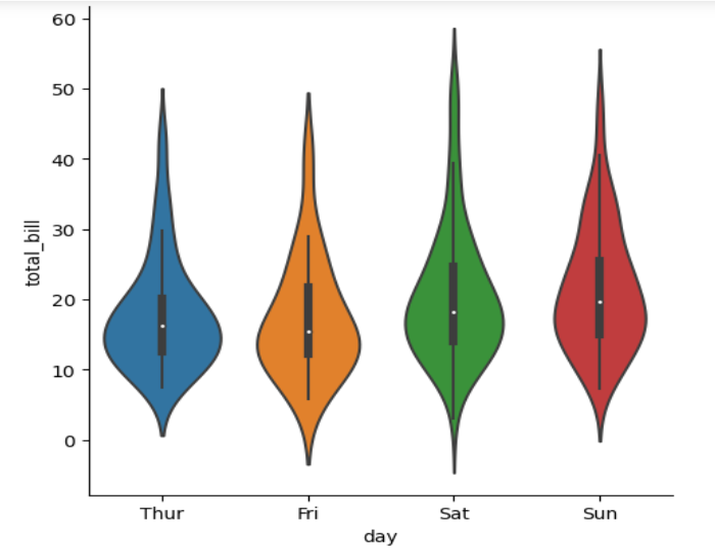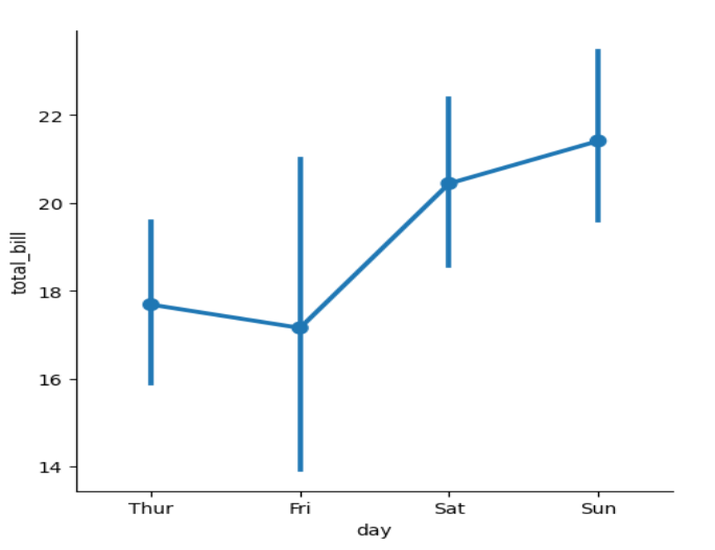
 Data Structure
Data Structure Networking
Networking RDBMS
RDBMS Operating System
Operating System Java
Java MS Excel
MS Excel iOS
iOS HTML
HTML CSS
CSS Android
Android Python
Python C Programming
C Programming C++
C++ C#
C# MongoDB
MongoDB MySQL
MySQL Javascript
Javascript PHP
PHP
- Selected Reading
- UPSC IAS Exams Notes
- Developer's Best Practices
- Questions and Answers
- Effective Resume Writing
- HR Interview Questions
- Computer Glossary
- Who is Who
Plotting different types of plots using factor plot in seaborn
Seaborn, a popular data visualization library, offers a versatile tool called Factor Plot, now replaced by Catplot, that enables users to create a wide range of plots. This article serves as a comprehensive guide to help you leverage the power of Factor Plot in Seaborn.
From loading datasets to preprocessing data, performing analysis, and visualizing results, we will explore step-by-step instructions and code examples to plot different types of plots, unlocking the potential of data visualization in our projects.
What is a Factor Plot?
Factor plot, now replaced by `catplot`, is a versatile plotting function in the seaborn library. It allows users to create various categorical plots for data visualization. With Factor plot, we can visualize relationships between variables across different categories.
The syntax for plotting a Factor plot involves specifying the x-axis variable, y-axis variable, dataset, and the kind of plot (e.g., bar plot, box plot, violin plot). However, Factor plot has been deprecated in recent seaborn versions. It has been replaced by `catplot` to provide a more consistent and flexible interface for creating categorical plots, offering improved functionality and expanded options.
Why is a Factor Plot used?
Factor Plot in Seaborn is used for visualizing categorical data. It allows users to analyze and compare different categories within a dataset through various types of plots such as bar plots, box plots, violin plots, and more. Factor Plot is particularly useful for exploring relationships, distributions, and trends across categorical variables. It provides a straightforward way to showcase patterns and variations in data, making it easier to draw insights and make informed decisions. However, with the introduction of Catplot, Seaborn aimed to provide a more unified and comprehensive approach to categorical plotting.
Plotting Different Types of Plots using Factor Plot in Seaborn?
Below are the general steps to plot different types of plots using the `factorplot` (now replaced by `catplot`) function in seaborn ?
Import the required libraries ? Begin by importing the necessary libraries for the analysis and visualization tasks. Typically, we will need to import seaborn and matplotlib.pyplot.
Load or prepare the dataset ? Load the dataset from a file or prepare it in a suitable format for analysis. Ensure that the dataset is in a format that Seaborn can work with.
Perform any necessary data preprocessing ? If the dataset requires any preprocessing steps such as cleaning missing values, handling outliers, or transforming variables, perform those steps before plotting.
Use the `catplot` function ? Replace the deprecated `factorplot` with `catplot` in the code. The `catplot` function is a general categorical plotter in seaborn that can create various types of plots.
Specify the variables and plot type ? Provide the necessary arguments to the `catplot` function. Specify the x-axis variable, y-axis variable, and the dataset. Additionally, specify the kind of plot we want to create (e.g., bar plot, box plot, violin plot, point plot).
Customize the plot (optional) ? Customize the plot as per the requirements. We can add labels, titles, legends, and change color schemes to make your plot more informative and visually appealing.
Display the plot ? Finally, use the `plt.show()` function from the `matplotlib.pyplot` module to display the plot on your screen.
Example
import seaborn as sns
# Step 1: Load the dataset
dataset = sns.load_dataset('tips')
# Step 2: Data preprocessing
# Convert 'sex' column values to lowercase
dataset['sex'] = dataset['sex'].str.lower()
# Step 3: Data processing
# Group the dataset by 'day' and 'sex' and calculate the average total bill for each group
avg_bill = dataset.groupby(['day', 'sex'])['total_bill'].mean().reset_index()
# Step 4: Data analysis and visualization
# Plot different types of plots using catplot
# Example 1: Bar plot
sns.catplot(x='day', y='total_bill', data=dataset, kind='bar')
# Example 2: Box plot
sns.catplot(x='day', y='total_bill', data=dataset, kind='box')
# Example 3: Violin plot
sns.catplot(x='day', y='total_bill', data=dataset, kind='violin')
# Example 4: Point plot
sns.catplot(x='day', y='total_bill', data=dataset, kind='point')
# Example 5: Bar plot with processed data
sns.catplot(x='day', y='total_bill', hue='sex', data=avg_bill, kind='bar')
# Step 5: Display the plots
plt.show()
Output





Conclusion
In conclusion, while Factor Plot in Seaborn offered a versatile solution for visualizing categorical data, it has been deprecated and replaced by Catplot. Catplot provides a more comprehensive and streamlined approach to categorical plotting, combining various plot types into a unified function.
By leveraging Catplot, users can efficiently analyze and communicate insights from categorical data, enhancing their data visualization capabilities in Seaborn.

